Who Is Sofyan Amrabat?
One of the fairy-tale stories of this precarious rendition of the FIFA World Cup has been Morocco.
Walid Regragui, having been in charge for just four months prior to the tournament’s commencement, managed to rally his troops and capture the hearts and minds of, not only the Moroccan people but the millions and millions watching from home.
Having topped a difficult group which included Belgium, Croatia and Canada, the Atlas Lions managed to hold off Spain for 120 minutes in the Last-16 before eventually winning on penalties to progress to the quarter-finals, the furthest that the African nation has ever gone at a World Cup.
More impressively, Morocco only conceded one goal in the first four matches which was coincidentally an own goal against Canada. The team have been so solid defensively that only Morocco can score against themselves.
The key performer of the Moroccan national team, and one of the best throughout the tournament so far overall, has been Fiorentina midfielder Sofyan Amrabat.
Playing as the base of Regragui’s midfield trio, the 26-year-old has been a rock, acting as the team’s fulcrum in and out of possession.
This tactical analysis piece will be a Sofyan Amrabat scout report at the World Cup. It will be a player analysis of why the former Feyenoord man has been so vital within Morocco’s tactics in Qatar.
Sofyan Amrabat Style Of Play
In Florence, Amrabat has been used as a single pivot at times, although this season, the Moroccan has played in a double-pivot alongside Rolando Mandragora.
However, Amrabat looks far more comfortable on his own, sitting in front of the centre-backs and protecting space between the lines.
At international level, Amrabat’s role is far more restricted than with his club in Serie A.
With Fiorentina, the midfield general is given a greater license to make forward runs and get involved in the attack.
This is perhaps because he is not the only pivot player. If Amrabat gets forward on the attack, his partner will still be sitting deeper and protecting the backline. This adventurous nature is noticeable in the player’s heatmap for Fiorentina.
Sofyan Amrabat Heat Map
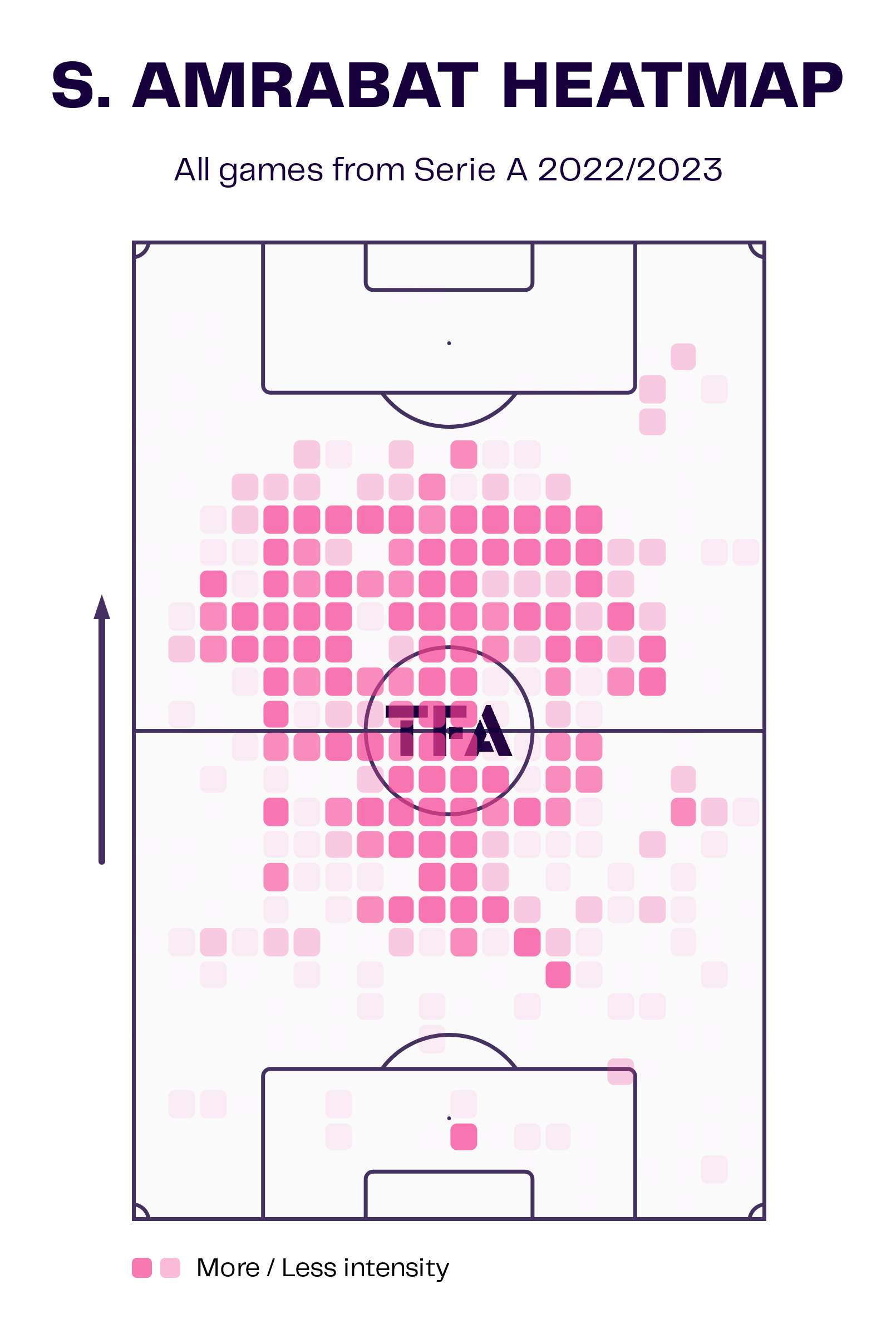
However, under Regragui at the World Cup, given that Amrabat is deployed as the sole number ‘6’, he is not afforded this freedom.
The instructions from his manager in possession are to sit in front of the centre-backs and help to circulate the ball as well as to progress it forward. Often, it entails dropping beside or in between the central defenders too but Amrabat will rarely venture forward.
Out of possession, he must defend the zones in front of the centre-backs. All of this will be analysed in greater detail later in this scout report, but it means that his heatmap for Morocco shows a greater density in the team’s own half of the pitch.
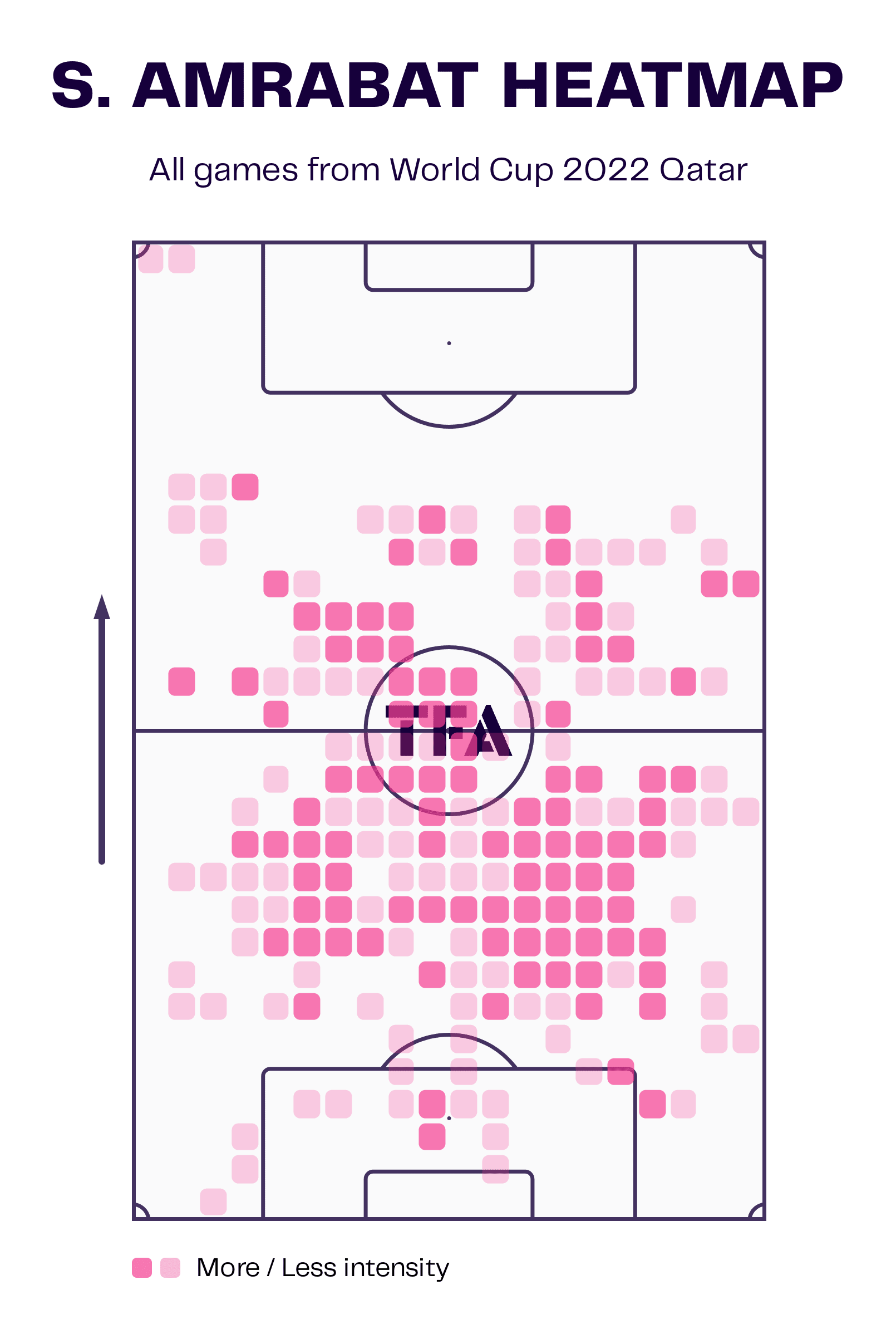
While Amrabat has been excellent for La Viola since joining the Italian giants almost three years ago, he has stood out more at the World Cup and may even be more comfortable on his own behind two advanced central midfielders.
Sofyan Amrabat On Defense
Before getting into the nitty-gritty of Amrabat’s role within Regragui’s setup, it is important to note the shape used by Morocco in Qatar which has been a 4-1-4-1.
The former Wydad boss has deployed this formation in every match so far at the World Cup, regardless of the opposition.
The Atlas Lions have been extremely well-drilled too, looking prepared to stop even the greatest of forward lines which is a massive credit to Regragui and his staff given how little time they have had with the squad.
Amrabat has acted as the defensive midfielder in this formation or the first ‘1’ in the team’s 4-1-4-1.
Out of possession, Morocco look to sit deep and soak up pressure from the opposition, keeping really compact between the lines in order to suffocate this space which is the most dangerous area for an attacking player to receive the ball inside a defensive block.
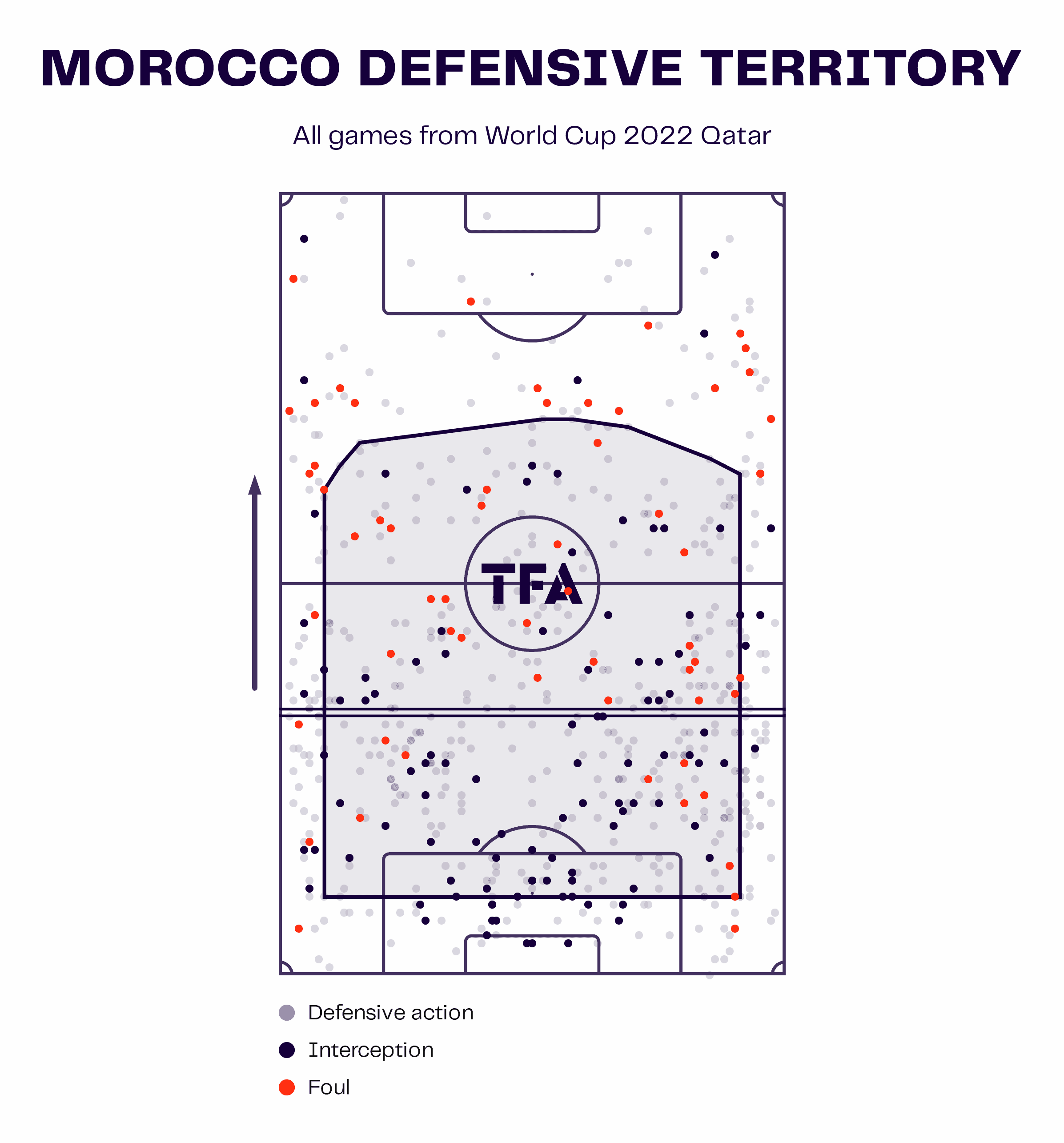
Morocco’s defensive territory map portrays the side’s tactical plan perfectly. The average area of engagement for Regragui’s men is quite broad but doesn’t reach the final third.
The African giants prefer to sit deeper, defending their own box while the average defensive line height is very deep as well. In fact, it is the deepest defensive line on average out of all the teams that reached the quarter-finals of the coveted competition.
The two central midfielders in Morocco’s 4-1-4-1 are tasked with marking the halfspaces, cutting out the opponent’s access into these areas. This often entails going man-to-man against their opposite numbers and it worked extremely well against Spain as Luis Enrique wants his two ‘8’s to be found in these spaces.
Meanwhile, Amrabat is instructed to play more zonally, picking up any players that are roaming in his zone.
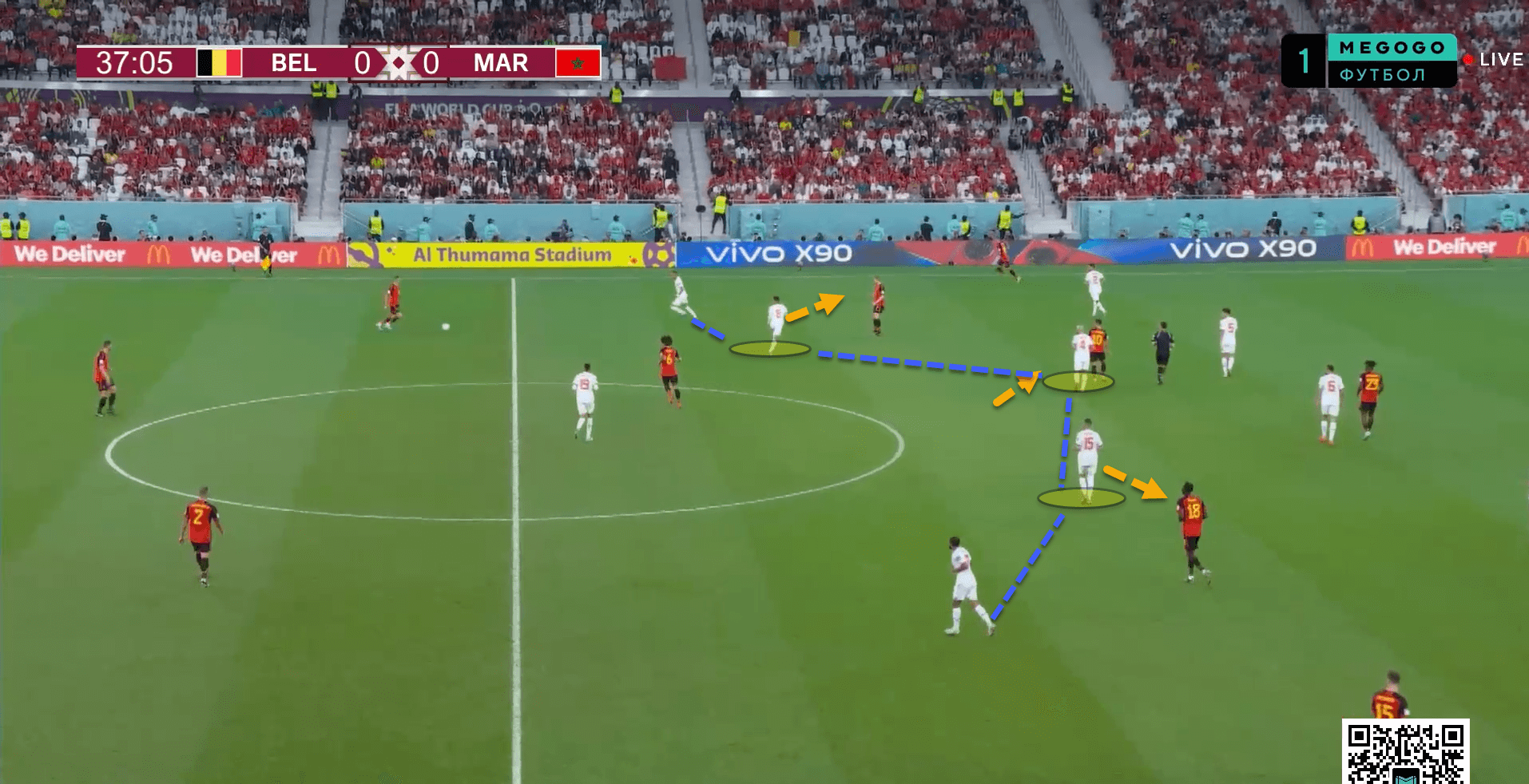
Here, Selim Amallah and Azzedinne Ounahi are marking Belgium’s players in the halfspaces. Between the pair, Amrabat is picking up Eden Hazard who was temporarily positioning himself in the Fiorentina midfielder’s zone.
Playing as a pivot in a three-man midfield requires serious tactical and positional intelligence. This is something that Amrabat has in abundance.
Not only must he defend his zone, but Amrabat must always be aware of oncoming danger, being one step ahead of the game at all times, ready to leave a player in order to go mark or apply pressure to another.
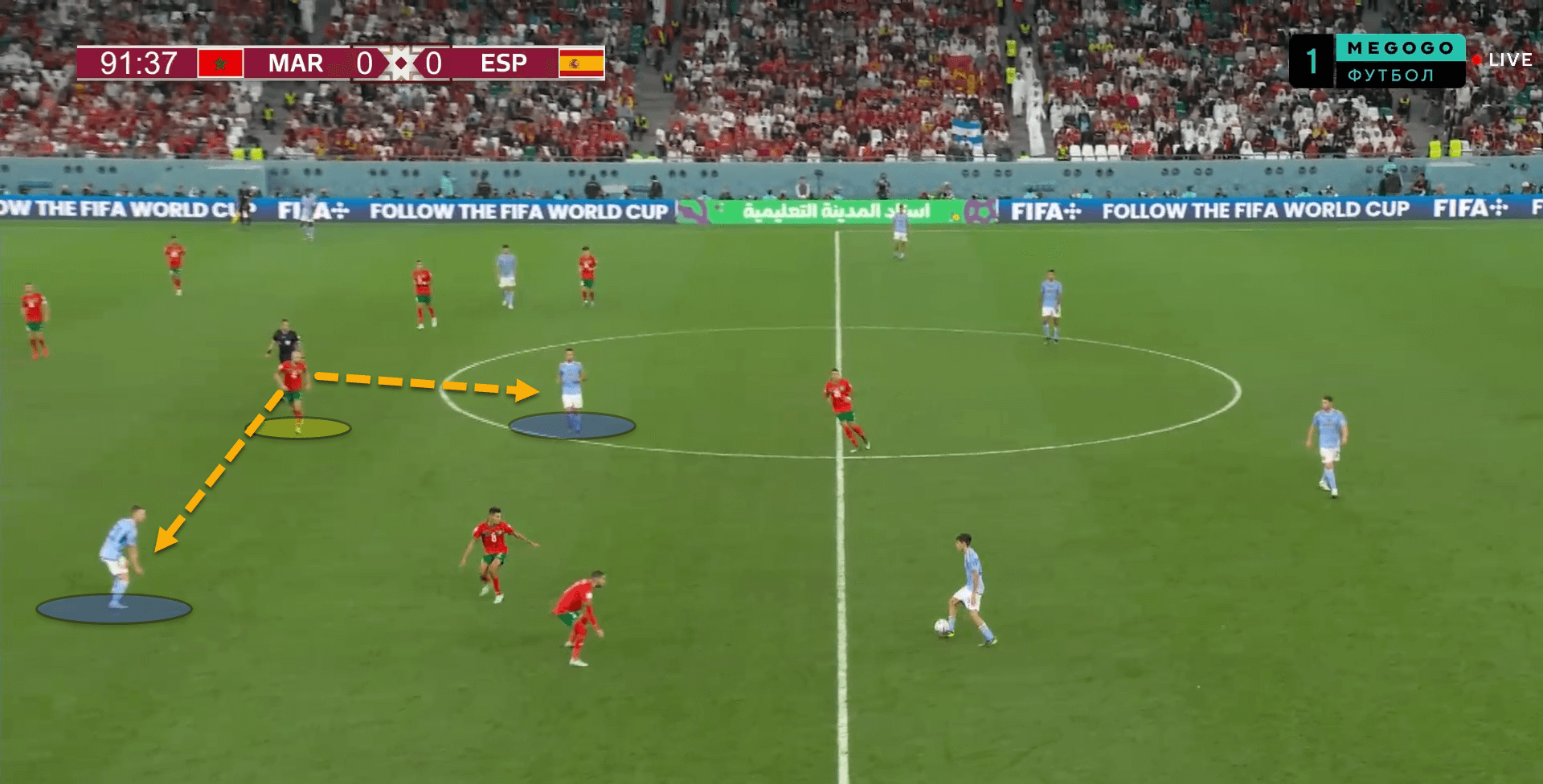
For instance, here in the side’s Last-16 clash with La Roja, centre-forward Youssef En-Nesyri has failed to cut off the passing angle to Sergio Busquets, the Spanish single pivot.
Furthermore, there was also a possibility that Spain would still be able to slide the ball through to Dani Olmo in the left halfspace.
Scanning his surroundings and assessing the danger, Amrabat positioned himself at a close enough distance between both Olmo and Busquets, orienting his body in a manner which allows him to step up and push across depending on the next pass. Details like this can often go unnoticed in games but Amrabat is a specialist at what he does.
Playing in this role also requires a midfielder to constantly communicate with those around him, ensuring that no player is left unmarked and free to receive.
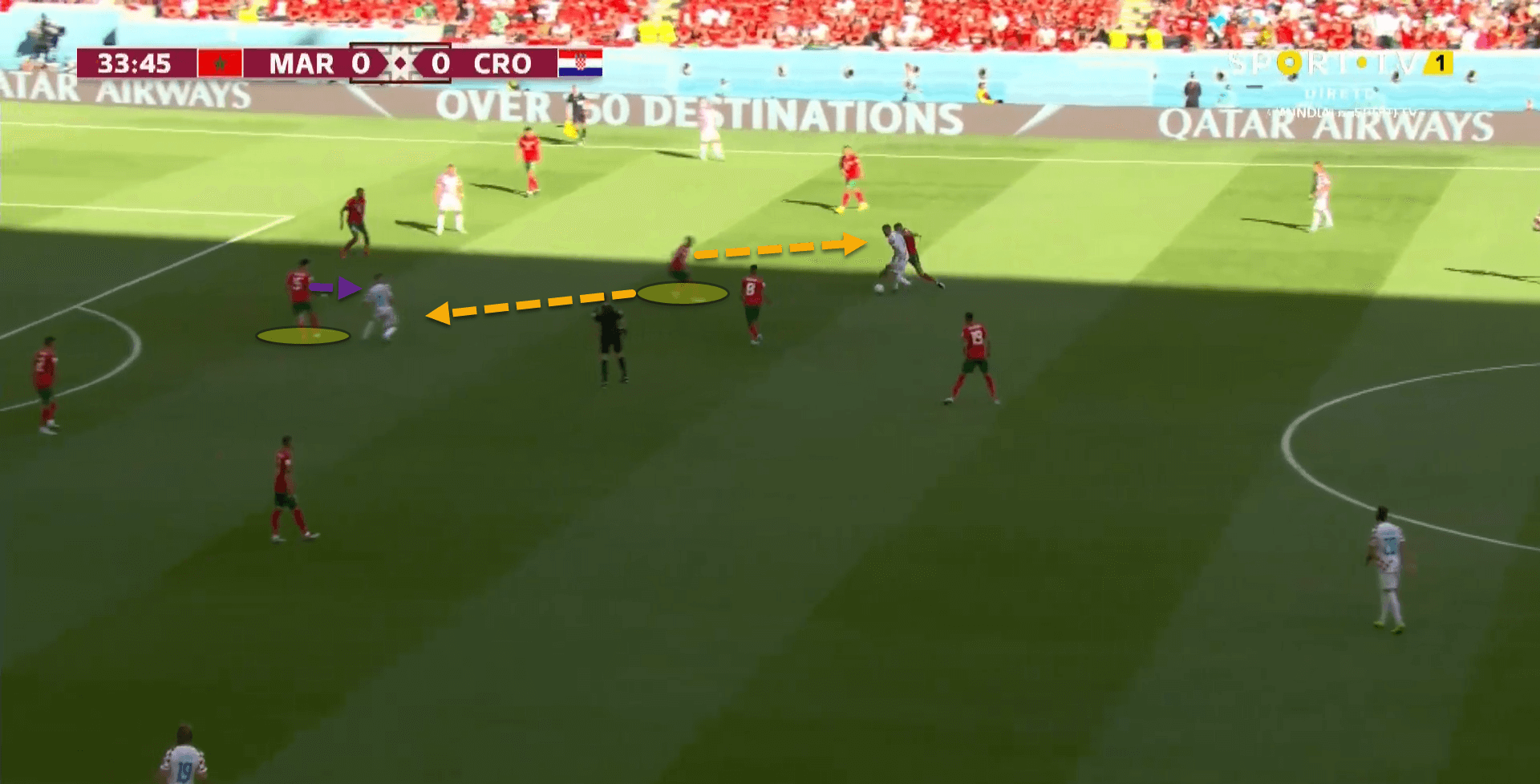
Here, Amrabat was marking the Croatian centre-forward in front of the backline. In the blink of an eye, one of Croatia’s midfielders managed to turn away from Morocco’s advanced midfielder and was running at the space in front of the defence.
Quickly reacting, Amrabat told his centre-back to pick up the Croatian attacker so he could step up and win the ball back for the Atlas Lions, a truly underrated strength for a holding midfield player.
Intercepting And Dropping Into The Backline
Nonetheless, as a pivot player, Amrabat must be flexible and be ready to move out of position when necessary to plug holes in his defence.
This involves an enormous level of concentration as players have a painstaking tendency to keep their eyes on the ball rather than watching space.
Amrabat’s immense concentration levels are one of the primary reasons why Morocco have the best defensive record at the World Cup. The 26-year-old is like a plug, blocking water from seeping down the drain.
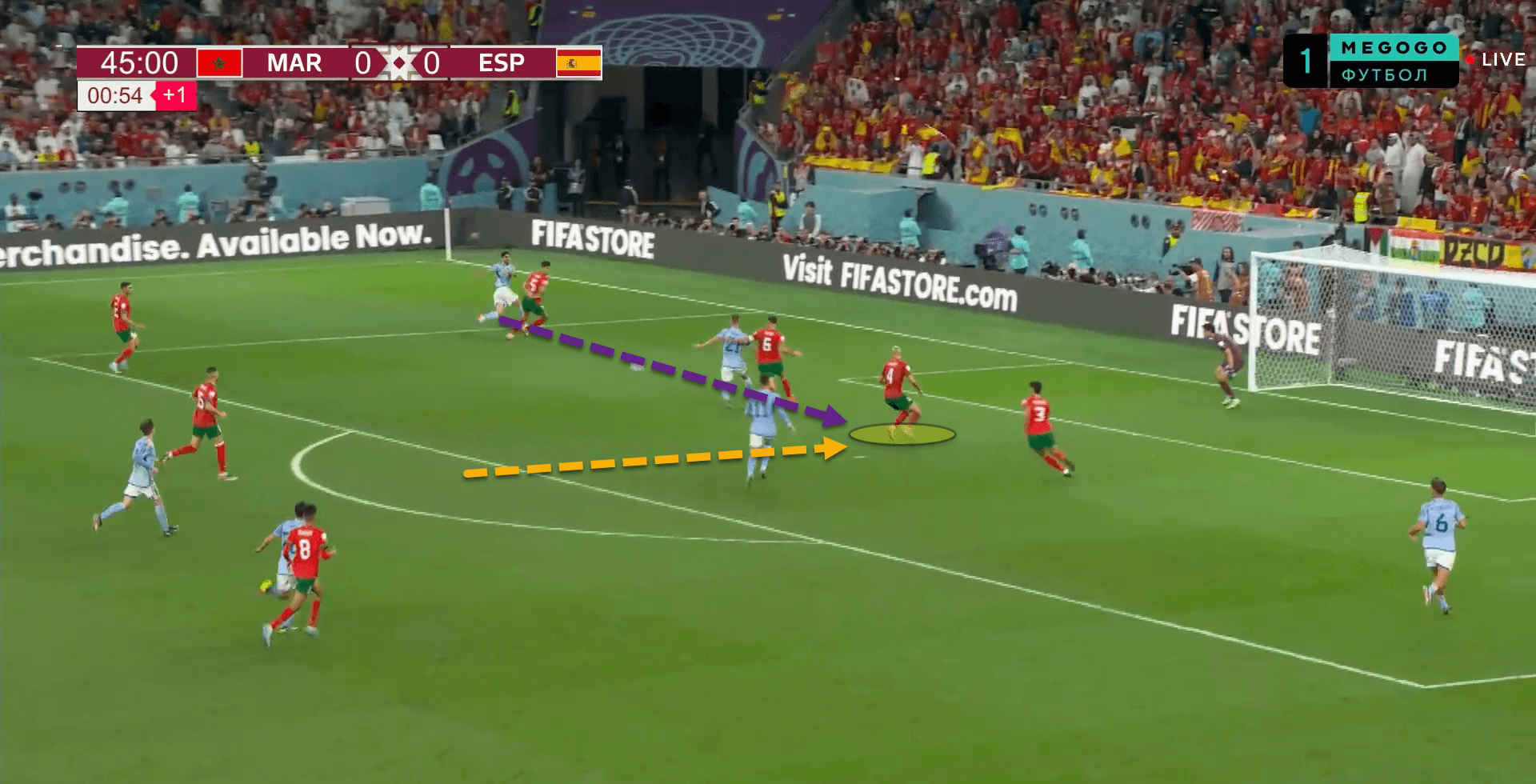
In this example, Morocco were caught out in transition and the backline would have been overloaded by Spain on the break as right-back Achraf Hakimi was out of position.
Noticing the impending danger, Amrabat dropped between the left-back and the centre-back in case the ball trickled through to Ferran Torres, which it ultimately did. The Fiorentina man was there to sweep up the cross and clear the ball away from Morocco’s box.
His quick reactions, combined with his ability to recognise a gap in the backline make him a wonderful player for any centre-back to play with as they can rely on him to act as a temporary stop-gap while the team recoups their shape.
But it is not just space between the central defenders that Amrabat can gum up with his positioning. Often, as Morocco’s fullbacks are aggressive when pressing and can be stranded in higher areas during moments of established possession, he will be forced to push wider in order to make a tackle or intercept the ball.
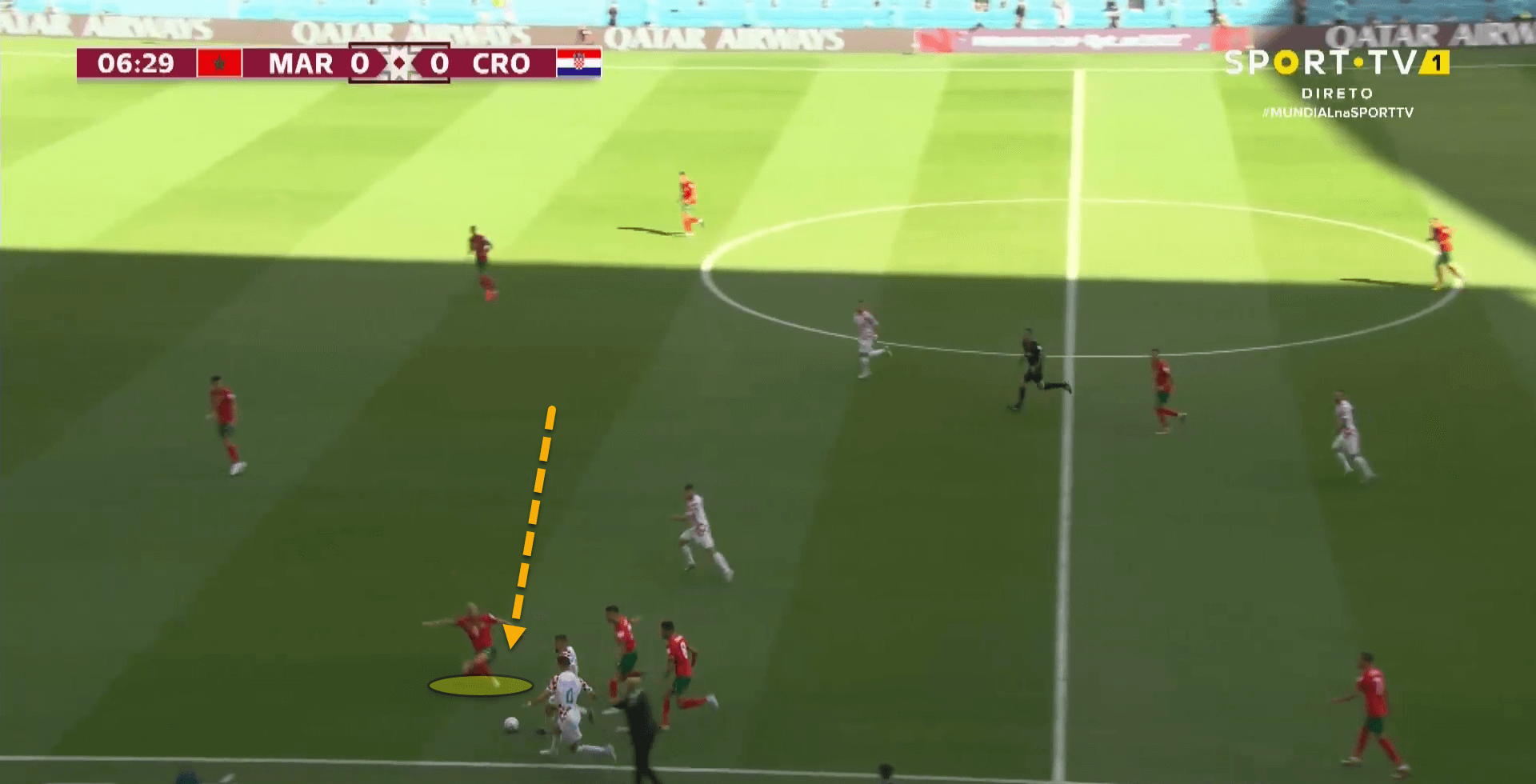
Here, the ball was played around Hakimi who had pushed slightly higher to help the right-winger in a 2v2 situation to win the ball back.
Hakimi and Chelsea star Hakim Ziyech lose this battle against Croatia who manage to get in behind down the flank, leaving the centre-backs vulnerable as the nearest one would have been forced to step across.
There was nothing to worry about though as Amrabat had already anticipated the possibility that the Croatian wide men would prevail and so darted across to make a superb sliding challenge, putting the ball out for a throw-in which allowed Morocco to regain their 4-1-4-1 low block shape.
The ground Amrabat has been covering out of possession for Regragui’s side at the World Cup is astronomical.
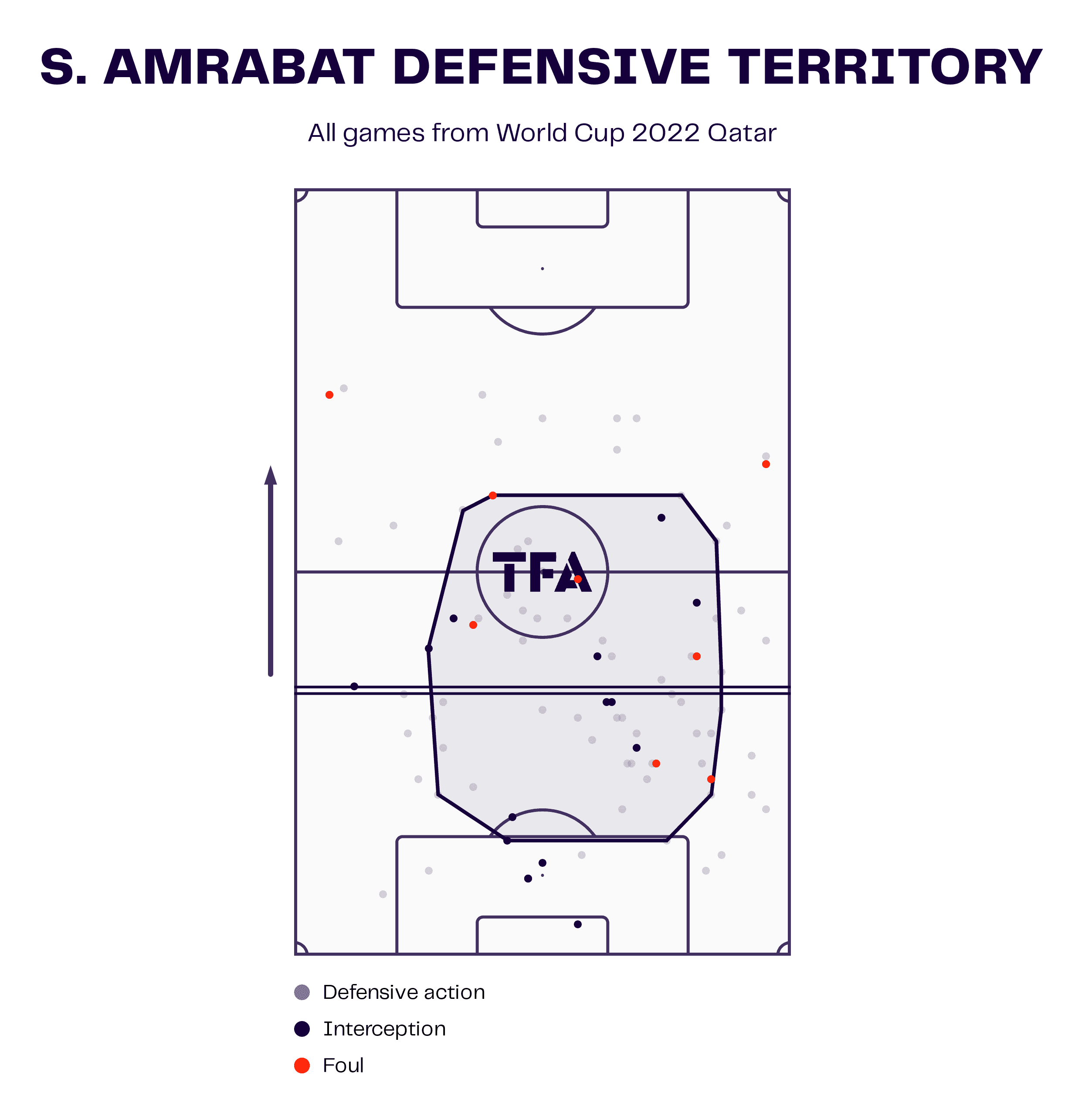
The player’s defensive territory map shows his average area of engagement which is far more than the little pockets of space between the lines, often stretching to the flanks, particularly the right side as Hakimi needs a lot of coverage due to his attacking nature.
While he is primarily positioned in front of the centre-backs, it may feel as though he is everywhere to his opponents.
Role in possession
Throughout this scout report, it may seem as though Amrabat’s responsibilities lie only when Morocco are in the defensive phase. However, his tactical role in possession is colossal too for the national team to be able to build up play from the back and move it forward.
As touched on previously in this article, Amrabat drops either beside or between the central defenders when Morocco are looking to play out from deep. This allows both fullbacks to push forward while still ensuring that the Atlas Lions have a 3v2 against the opposition’s two centre-forwards.
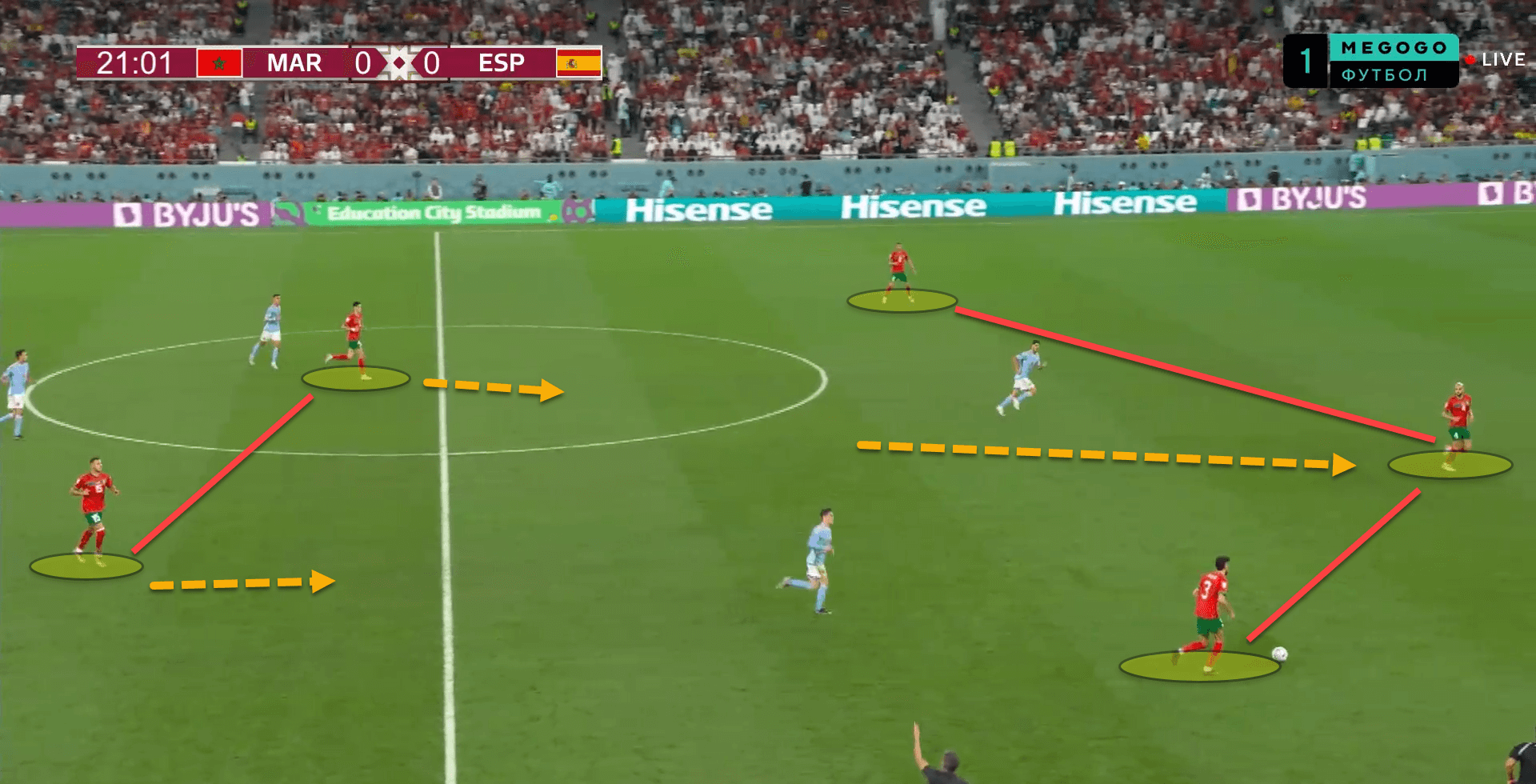
When this movement occurs from Amrabat, as shown in the above image, one or two of Morocco’s advanced midfielders drop into his vacated pivot space behind the opponent’s forward line, creating either a 3-2 or 3-1 build-up shape.
This isn’t uncommon with holding midfielders in the modern age but whether or not these players possess a decent passing range is another issue entirely.
Thankfully, for Regragui, Amrabat is excellent on the ball too and is constantly looking to play his first pass forward, attempting to break the opponent’s initial press where possible while reaching players in higher areas.
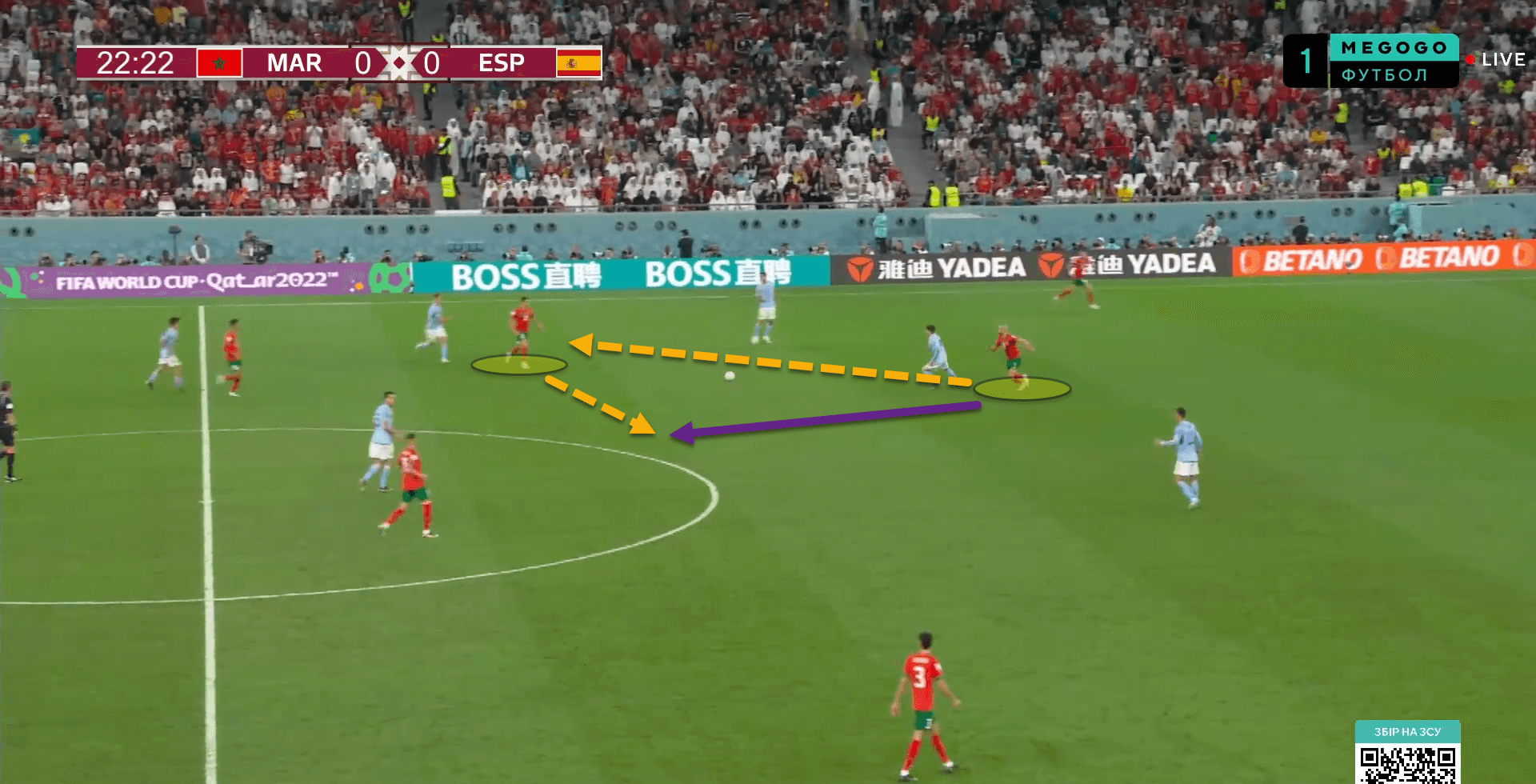
For instance, here, Amrabat has slipped the ball through Spain’s first line of pressure into one of his midfield partners. From there, he has continued his run, looking for the return pass while still facing forward.
He has also shown an impressive ability to break the opposition’s last line too which has proven useful on occasion for Regragui, particularly during transitions where the team will have numerous runners looking for passes into the space behind the backline.
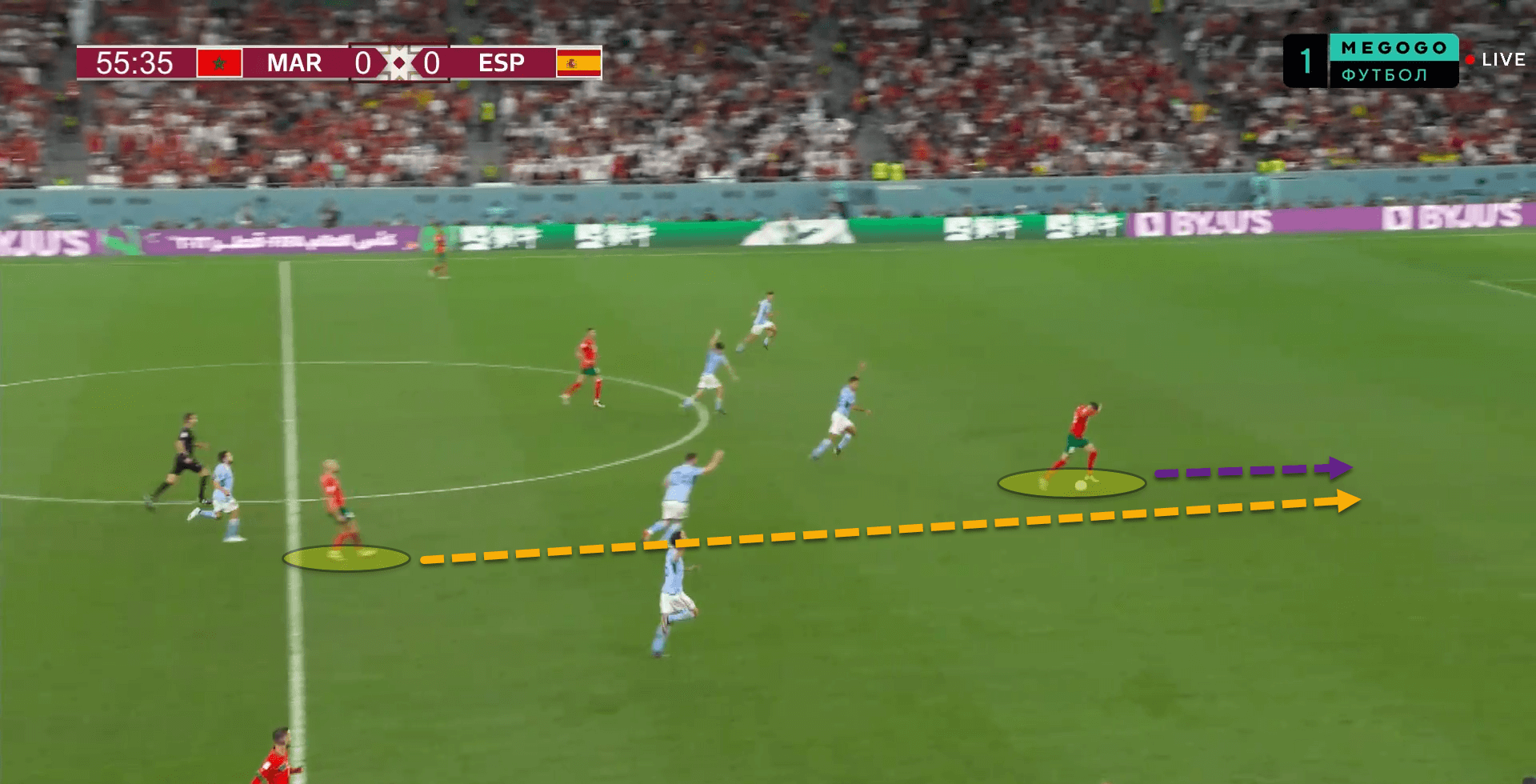
This move ended up being ruled out for offside but was a perfect example of how Amrabat can use his quality on the ball to be a creator from deep, not just an instigator of attacks.
Overall, Amrabat’s pass map throughout the entire World Cup so far has showcased his ability to help circulate the ball from left to right, switch the play and even play forward balls to the frontline.
Sofyan Amrabat Pass Map
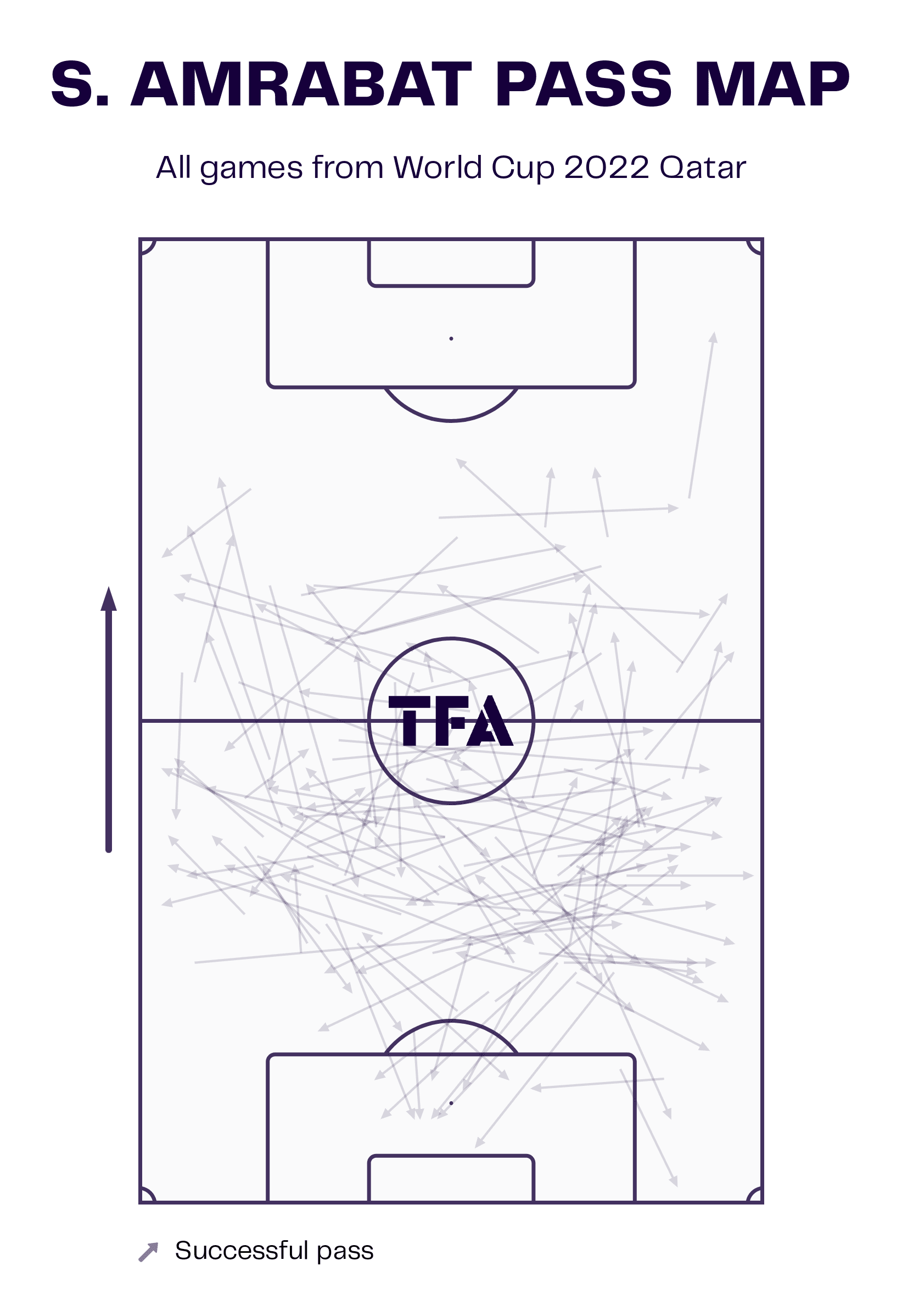
Just because someone doesn’t register goals or assists does not mean they can’t be just as important for their side in the attacking phase as a more advanced player. Amrabat has proven this more than anyone else in Qatar.
Conclusion
Amrabat isn’t a world-class player by any stretch of the imagination but as far as number ‘6s’ go, there are few at the World Cup who are as good both in and out of possession.
The most exciting part of the tournament is when a surprise package puts all of Europe’s elite on high alert with their sumptuous displays for their national side. In this rendition, you will have to look no further than Amrabat for that exact player.
One may even go as far as to say that the Fiorentina midfielder has been the best player at the tournament given the gravity of his importance for Morocco.






Comments